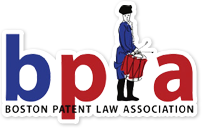
The AIA introduced several new proceedings in U.S. patent law to challenge the validity of an issued patent at the U.S. Patent Office and to avoid lengthy, expensive court proceedings. (IPR), as avenues for parties to petition the USPTO’s PTAB to reexamine the validity of issued patent claims. The new proceedings differentiate themselves by various requirements, including the effective filing date of the patent, who can file the petition for review (standing), time limits for filing the petitions, and the basis for review. The USPTO has provided
Inter Partes
ReviewTransitional Program for Covered Business Method Patents
(CBM), and PGR now join Ex Parte
Reexaminationa quick reference chart that highlights these differences
.
For example, a United States patent granted under either “first-to-invent” (FTI) or “first-inventor -to-file” (FITF) rules can be challenged by a third party as to the novelty or obviousness of the issued claims based on patents or other printed publications under IPR. If the patent issued under the FTI pre-AIA rules, a challenger can file a petition for review at any time after grant. But if the patent issued under the FITF post-AIA rules (i.e.,
with an effective filing date of March 16, 2013), the challenger must typically delay challenge until 9 months after patent grant or reissue. Under CBM, a party sued or charged with infringement can challenge certain business method patents on any ground of invalidity including lack of patent eligible subject matter. IPR and CBM became available for FTI patents upon enactment of the AIA, September 16, 2012, and already over 4600 petitions to institute such proceedings have been filed at the USPTO
(through February 29, 2016).
Although much has been written about IPR and CBM, the era of PGR is in its infancy. PGR is only available for patents subject to the FITF AIA provisions. Because PGR is only available to challenge FITF patents, we have just begun to see PGR petitions filed at the USPTO. A petition for PGR must be filed within 9 months of patent grant. According to USPTO statistics, the average total pendency of a patent application from filing date to issuance is about 26 months
(as of February 2016). File a Request for Continued Examination (RCE) and the pendency increases to about 56 months
(as of February 2016)! Following these statistics, applications subject to the AIA provisions first began to issue about May 2015, and many are still applications winding their way through the USPTO examination process. As of February 2016, only 21 PGR petitions had been filed
.
Any person, other than the patentee, can file a petition to initiate PGR as long as the petitioner has not previously filed a civil action challenging the validity of patent. The basis for the petition can broadly encompass just about any grounds for invalidity of any, or all, issued claims, except under “best mode.” For example, lack of novelty, obviousness, and issues of written description, enablement or definiteness of the claims, as well as the ubiquitous non-patent eligible subject matter under 35 U.S.C. § 101
, constitute suitable basis for a PGR petition. And, for good measure, a petitioner can even raise a novel or unsettled question of law if it is to be deemed relevant to other patents or patent applications under 35 U.S.C. § 324(b)
.
Think you are safe from a PGR challenge because your patent claims priority to an application filed before March 16, 2013 and your effective filing date is pre-AIA? Think again. In Inguran, LLC d/b/a Sexing Technologies v. Premium Genetics Ltd
., Case PGR2015-00017 for U.S. Patent 8,933,395
(the ‘395 Patent), the Board entered a decision on December 22, 2015, to institute a PGR for a continuing patent that was filed on January 31, 2014, but claimed the benefit of several provisional and non-provisional applications filed as early as July 2002.April 2016 -
By
Doreen Hogle
, HoustonHogle LLP
After the Board analyzed independent claims 1 and 2 of the ‘395 Patent, they stated “we are not persuaded that claim 1 is not entitled to an effective filing date before March 16, 2013.” Claim 2, however, did not fare so well under analysis, and the Board “was persuaded” that claim 2 was not entitled to a pre-AIA effective filing date. Thus, the Board determined that at least one claim was subject to the FITF AIA provisions and, subsequently, the entire patent was subject to PGR.
Once the Board was persuaded that at least one issued claim had the effective post-AIA filing date in January 2014 and the patent was subject to PGR, the Board turned to the asserted grounds of unpatentability raised by the Petitioner under enablement, indefiniteness, novelty, and obviousness.
Under 35 U.S.C. § 324(a)
, the standard for granting a petition for PGR is that the petitioner must demonstrate that it is more likely than not that at least one of the challenged claims is unpatentable. The Board so concluded, the petition for PGR was granted, and trial instituted.
The Board dismissed the patent owner’s arguments that determination of the effective filing date of the issued claims should be analyzed during the preliminary PGR proceedings as a threshold issue prior
to institution of a PGR. Was it unreasonable for the Board to rule that the question of an effective filing date of a patent based on a transitional application is an issue subject to the full scope of the PGR trial procedure? The Board reasoned that even after institution of PGR, the patent owner is able to present additional evidence to refute the petitioner’s assertion that the patent is subject to post-AIA provisions and PGR. Unfortunately for the patent owner, the patent is now in limbo until a final determination is made, and the trial will still be a costly, albeit not lengthy, proceeding (a final determination must be reached within 12 months from institution of a PGR, with very limited exceptions).Takeaway Practice Tips:
If your “transitional application” patent is challenged with PGR, use your Preliminary Response to the Petition to vigorously argue that the claims are entitled to their pre-AIA filing date and not subject to PGR. If the Board agrees, you may defeat the challenge without institution of PGR.
If you challenge a “transitional application” patent with PGR, set forth your strongest arguments in the PGR Petition that the challenged claims are subject to AIA provisions and PGR because the petitioner cannot respond to the patent owner’s Preliminary Response.
If your “transitional” application is undergoing USPTO examination, be sure that any claim amendment is clearly supported by the application as it was filed prior to March 16, 2013, to keep the pre-AIA effective filing date and avoid a PGR challenge.

Saved by the Date? Is Your Pre-AIA Patent still at Risk for AIA Post-Grant Review?
Patents with an effective filing date on, or after, March 16, 2013 are subject to
Post Grant Review
(PGR) within nine months of issuance under the Leahy-Smith America Invents Act of 2011
(AIA). But what about patents that issue from the so-called “transitional” applications filed on, or after, March 16, 2013, with a priority claim to an earlier filing date? Transitional applications can be subject to AIA provisions and PGR depending on whether the application contained at least one claim, at any time
, with a post-AIA effective filing date on, or after, March 16, 2013. Recently the Patent Trial and Appeal Board (PTAB or “the Board”) at the United States Patent and Trademark Office (USPTO) granted a Petition for Post Grant Review for a patent issued from a continuation application that was filed in 2014 but claimed priority back to 2004. So don’t count on your earlier pre-AIA filing date to save your patent from PGR.
Inguran, the petitioner, filed for PGR of the ‘395 Patent asserting that all 14 issued claims were unpatentable for reasons of indefiniteness and lack of enablement, and that certain claims lacked novelty or were obvious. Premium Genetics, the patent owner, filed a preliminary response to the petition arguing that the ‘395 Patent was not subject to the FITF provisions of the AIA because the specification of the ‘395 Patent was identical to the specifications of all of the patents/applications to which priority was claimed, back to September 2004. Moreover, the patent owner argued that the USPTO had examined the application under pre-AIA FTI provisions. The patent owner submitted that the ‘395 Patent was subject to FTI rules, and thus not subject to PGR, and that the petition should be denied.
In its decision, the Board reiterated the statutory grounds for a petitioner’s standing to request PGR under
37 C.F.R. § 42.204(a)
and that only patents subject to the FITF provisions of the AIA § 3(n)(1)
are eligible for PGR. Certain applications filed on, or after, March 16, 2013, may claim the benefit of an earlier priority date under 35 U.S.C. §§ 119
, 120
, 121
, or 365
and thus can be entitled to an earlier effective pre-AIA filing date. Such applications are termed “transitional” applications. But transitional applications can be subject to AIA provisions depending on whether the application contained at least one claim, at any time
, with an effective filing date on, or after, March 16, 2013. “At any time” means that even if the claim was cancelled during prosecution and never issued in the patent, it can doom the patent to AIA rules and PGR. Moreover, to be entitled to the earlier effective filing date, the claim must be disclosed according to the requirements of 35 U.S.C. § 112
regarding written description and enablement.


Table of Contents
President's Message by Erik Belt
Read more >
Message from the Editor-in-Chief
Read more >
Alice: Making Step Two Work
Read more >
Grant Submissions and Novelty: A Catch-22 for Startups
Read more >
When are Method/Device Hybrid Claims Indefinite?
Read more >
Update on the Patent Pro Bono Program of New England and Call For Volunteer Attorneys!
Read more >
Saved by the Date? Is Your Pre-AIA Patent Still At Risk for AIA Post Grant Review?
Read more >
Index
6th annual Invented Here! Announcement
Read more >
BPLA Sponsors the New England Innovation Award Program of Smaller Business Association of New England (SBANE)
Read more >
Report on the Giles Rich Moot Court Competition
Read more >
BPLA Writing Competition Accepting Entries
Read more >
Annual Judges' Dinner
Read more >
IP Roundtable with Chief Judge Saris
Read more >
Significant changes to the rules related to european trademarks ¡v three things you should know
Read more >
What/where/when/why/how do I include this sequence in a sequence listing?
Read more >
Members on the move
Read more >
< Back
Member Companies and Firms are Encouraged to Utilize BPLA’s Career Center
Read more >

